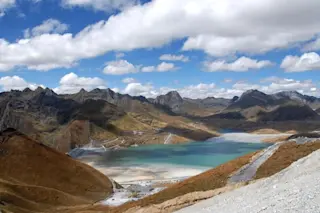It was a twisted cycle: In the 1970s, Bangladeshis used surface ponds or rivers to collect rainwater for drinking. But thanks to garbage dumping and sewage, that water became a breeding ground for disease. So UNICEF sought to fix the problem—the agency helped residents drill simple wells that drew water from a shallow aquifer. But this remedy became a tragedy. Bangladesh's groundwater was laced with arsenic. Now, in a study in Nature Geoscience, a team from MIT has answered one of the outstanding pieces of the Bangladesh puzzle: Just how all that arsenic got into the water in the first place.
Bangladesh occupies the flood-prone delta of the river Ganges [New Scientist]
, and that river brought the arsenic to the region's sediments. But why doesn't it just stay in the sediments once it's there? Back in 2002, another MIT team began to answer the question by showing that microbes ...









